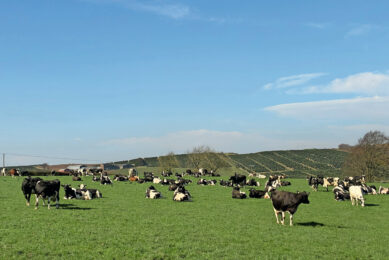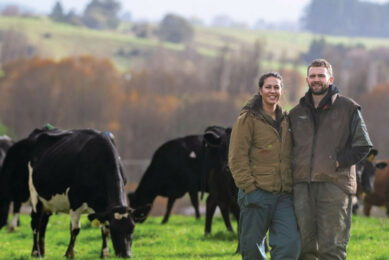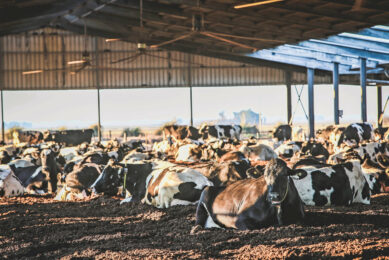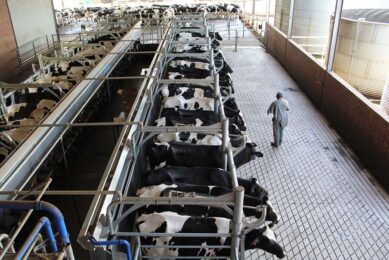Scotland: Successfully converting tenant farm into a dairy unit
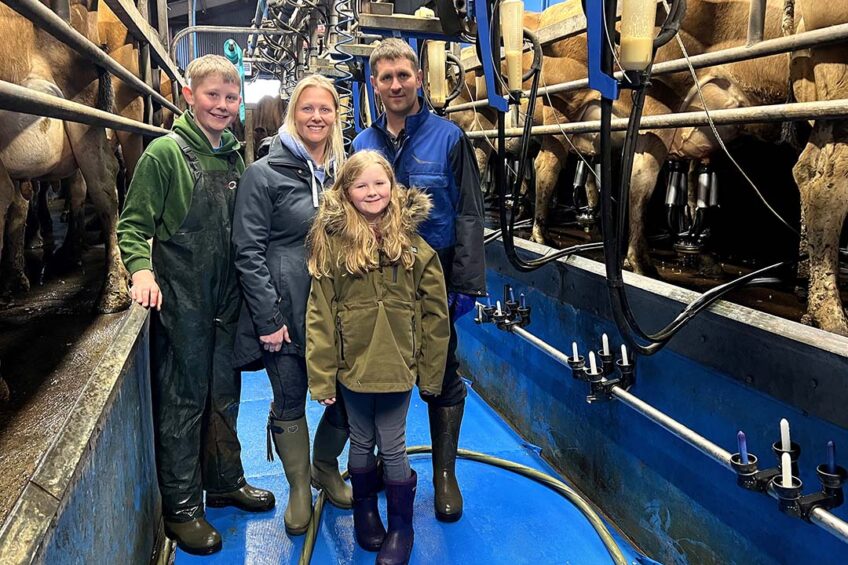
Taking on a tenancy farm is a huge challenge in itself, but for new entrant farmers to take it on and convert it into a dairy unit takes a lot of courage and determination.
And that’s exactly the true grit that Andrew and Suzanne Jardine, both 38, have shown as they now run just over 100 Jersey cows on Newfarm, part of the Applegirth Estate at Moffat in Scotland.
It’s been a fast learning curve for the duo and their 2 children Howie (12) and Tilly (10), who are now half way through their 10-year lease.
No dairy facilities
The logistics and infrastructure of the farm have certainly changed since the Jardines took on the tenancy in August 2019, when they started off with only 1 heifer and no buildings. “The farm is part of the Crown Estate Scotland and extends to 242 acres. It was in a fairly dilapidated condition when we took it on with no dairy facilities at all,” says Andrew. “We started the foundations of the dairy during the covid lockdown in early 2020 and purchased 32 bulling heifers from Denmark to start building a herd.”
He says that the only things they had available were 32 cubicles from the 1970s and a 90,000 gallon slurry tower. A second-hand Fullwood DeLaval hybrid parlour that had been replaced by robots on a farm 30 miles away was purchased along with a bulk tank from another farm that had been sold.
Keeping costs low on the dairy farm
“In order to keep our costs low, I worked off-farm a lot with the builder to gain credit with him so he would come and construct the parlour without money changing hands,” adds Andrew.
In June 2021, the first heifer calved at Newfarm and that was the foundation for the Applegarth Jersey herd that Andrew and Suanne have established today.
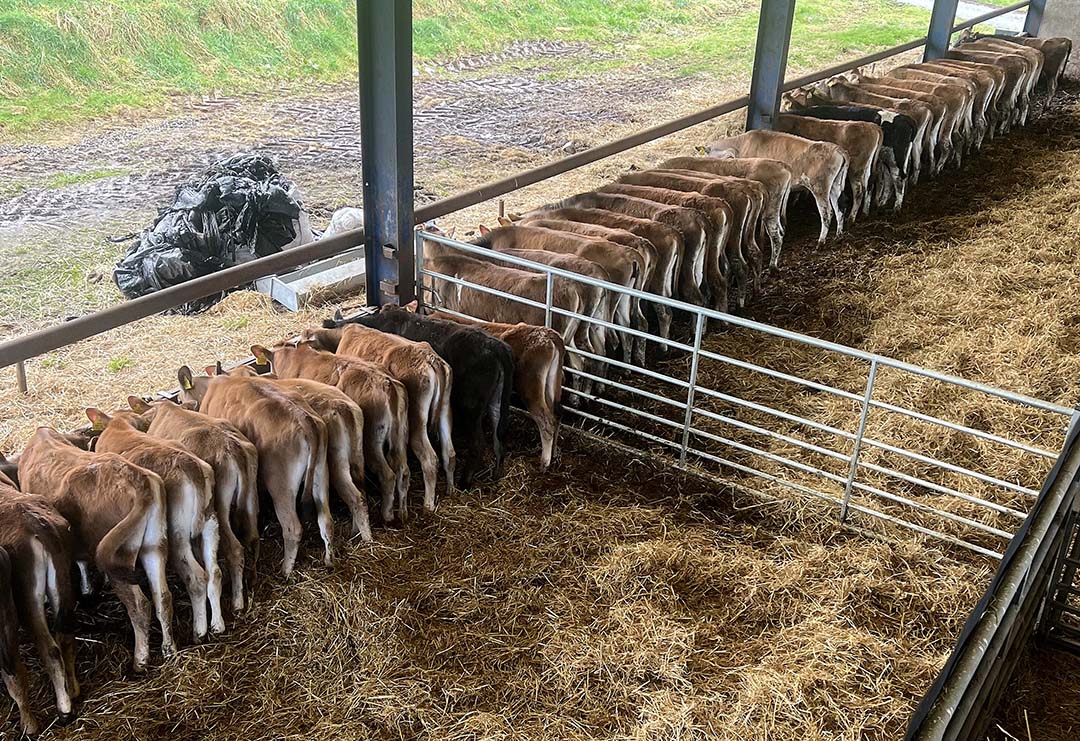
“Our current cow numbers total 104 milking and 3 dry. We have about 45 bulling heifers this year and 65 heifer calves to serve next winter<’ says Andrew. “I prefer the Jersey breed due to their high milk solids, being lighter cows for grazing and generally just liking them. We milk record with NMR and our annual average is sitting at 7,545 kg at 5.8% butterfat and 4.16% protein, and a SCC of 63.”
The farm’s rolling 12-month caving index is 389 and the cows are milked twice per day. “One of our recent highlights was winning second prize for the highest yielding Jersey in Scotland that records with NMR,” says Andrew, adding, “Cow 291 was one of our original Danish bulling heifers that we bought and has given us 3 heifer calves. She has held 3 times to first sexed semen service and is yielding 8,248 kg at 7.37% butterfat and 4.77% protein, with a CFP of 1,001 kg.”
Breeding goals at the farm
Andrew’s goal is to breed cows with good depth and width, with plenty of power in their chest, and good feet. The herd has been based on both Danish and North American genetics but he has been using the latter predominantly across the herd for the past 2 seasons.
His future plans include genomic testing of all the calves to match them with the best genetics to breed from.
Andrew says, “Cows are all run in one herd for ease of management and shed arrangements, plus calving them all between August and February. We tend to feed the cows very well over the winter, hoping to increase fertility. When April and May comes we can start grazing and reduce the concentrates with hopefully all cows in calf. All cows receive 2 or 3 goes of sexed semen first and this year an Angus bull will be turned out in April to tidy up,” he said.
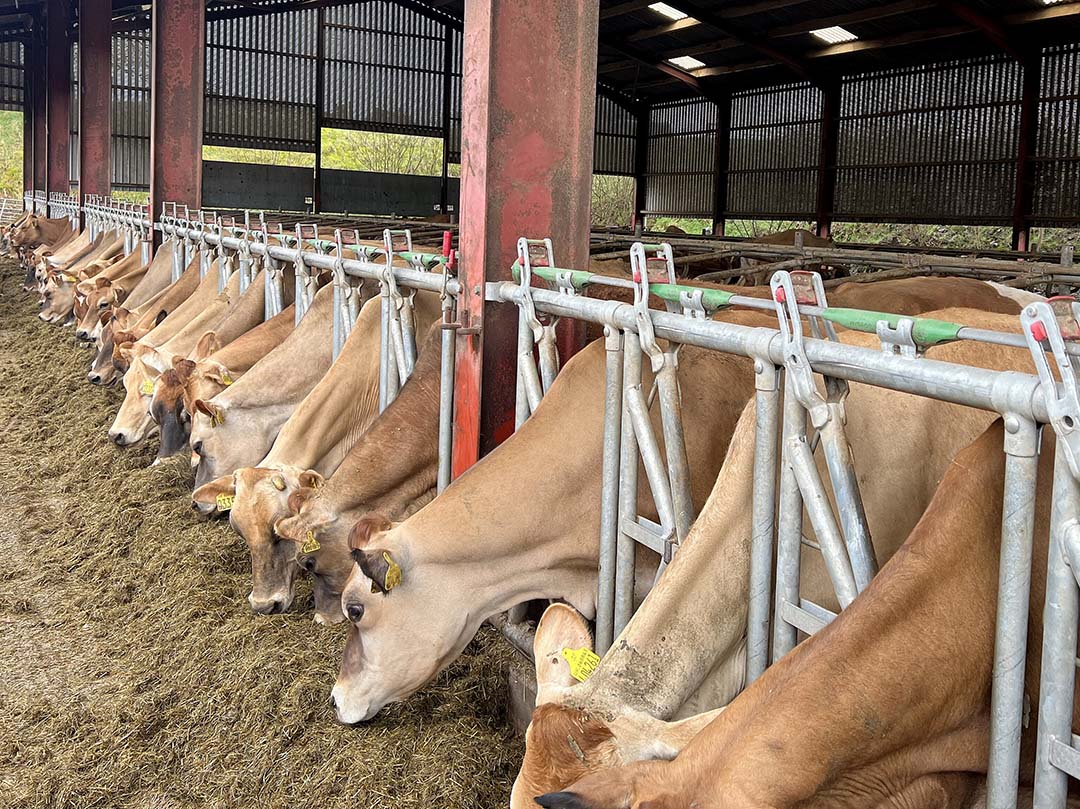
Andrew is the only full-time worker on the farm and uses 3 relief milkers to allow him extra time with his young family. “It is an area I need to address,” he says. “I am doing too many hours and spending my evenings sleeping on the sofa, which is not very fair on the family. Hopefully next winter we will be in a position to take on someone on full time.”
Feeding the herd
Andrew joined First Milk in June 2023 and is currently receiving around 48 pence per litre for combined solids just over 10%.
He states: “Cows receive 2 kg of a 20% blend in the wagon and the biggest milkers get up to 10 kg in the parlour per day. We use a 18% protein concentrate but can switch between starch-based or fibre-based depending on the type of silage we are using at the time. Our silage is all made into round bales, as there is no silage clamps here yet. Last year we took 4 cuts, aiming for a fifth, but wet weather spoiled the party so I just grazed it with lambs.
“I like using technology, however, starting from scratch as new entrants we are very limited as to what we can afford just now. We started using Uniform for cow management 2 years ago, and we added a Lely Discovery slurry collector. Next winter I hope to buy Cow Manager ear tags for health and fertility monitoring. The estate is currently building us a new calf shed and would like to install a computerised calf feeder in it.”
Dairy farm expansion
Andrew has plenty of plans for the farm in the future including expansion, but finding extra land to do so could be difficult.
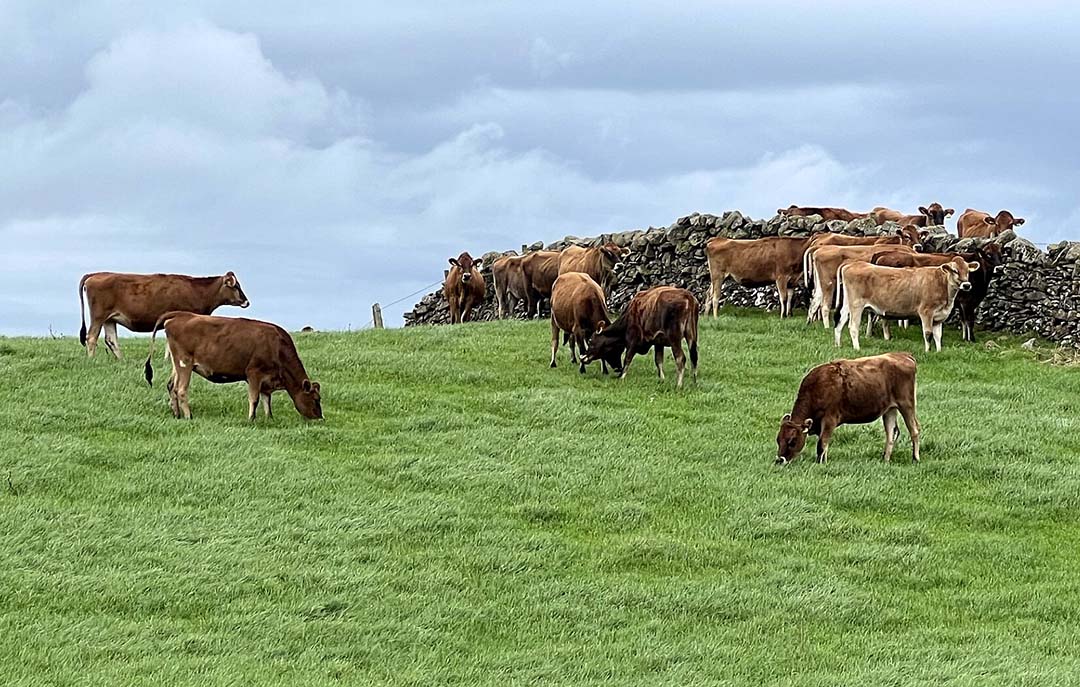
He says, “I believe this farm could run in excess of 200 milkers if the youngstock are reared off farm. Currently all heifers, from weaning up to bulling, winter in sheds we rent 5 miles down the road. I would like to add silage pits as soon as possible and we have just completed building a 1 million gallon slurry lagoon with help from a Scottish government AECS grant and from the Estate.”
Andrew notes that the opportunity to gain more land could be a challenge due to uncertainty in the Scottish tenanted sector, but hopes to overcome this by building and growing good relationships with anyone they rent from.
“Funding this entire venture has been really challenging as we have had to buy stock and also build a parlour, tank house, feed bin and install 100 new cubicles and mattresses. We are pleased to have started working with Oxbury Bank and find them really refreshing and supportive with us,” he adds.



